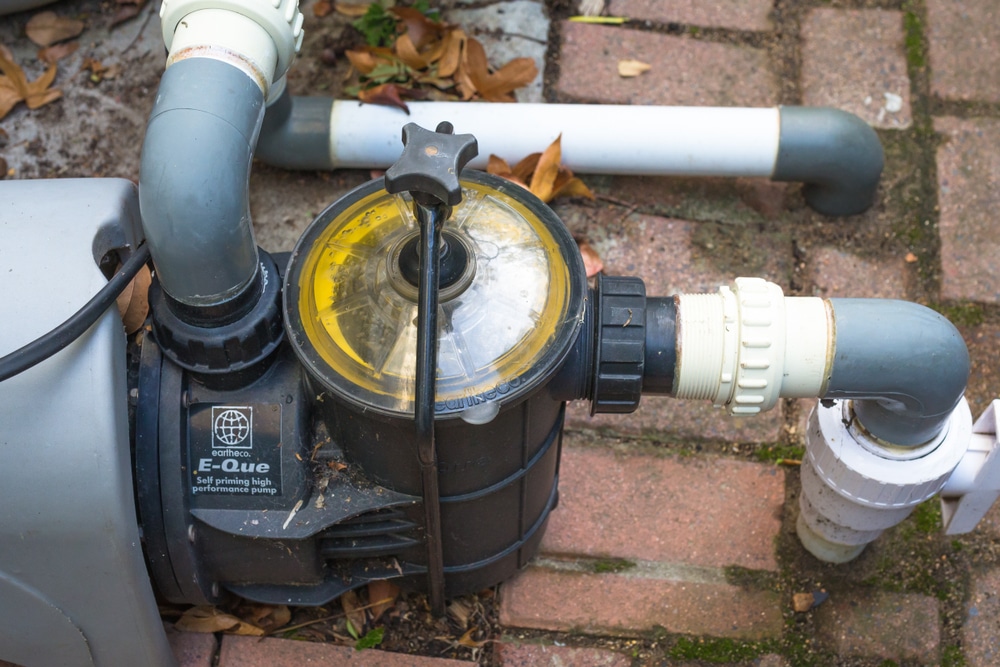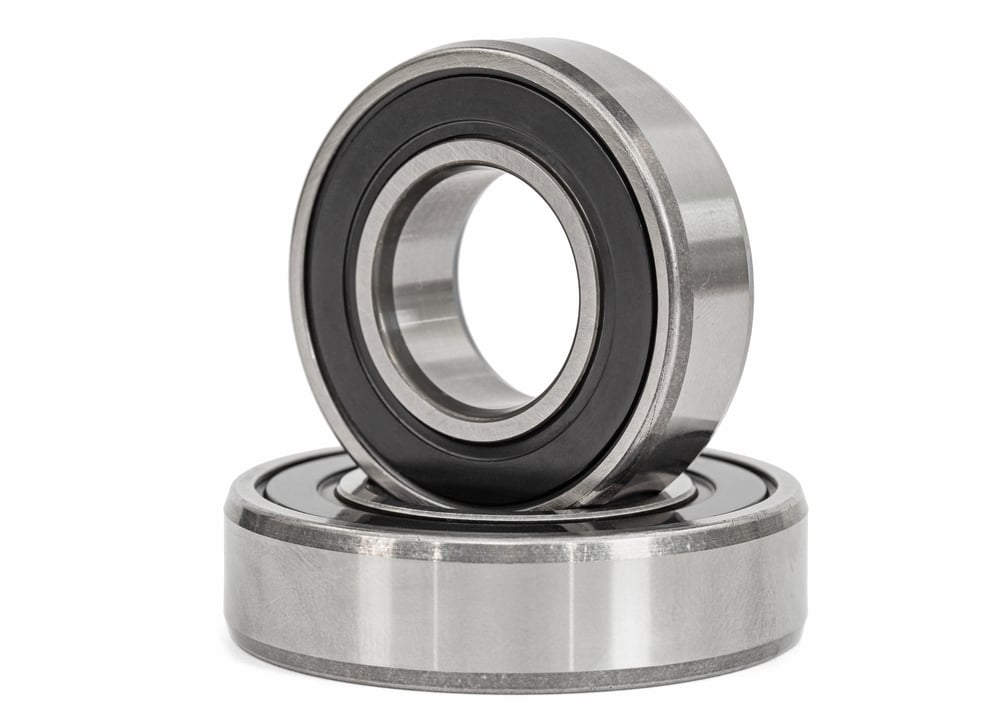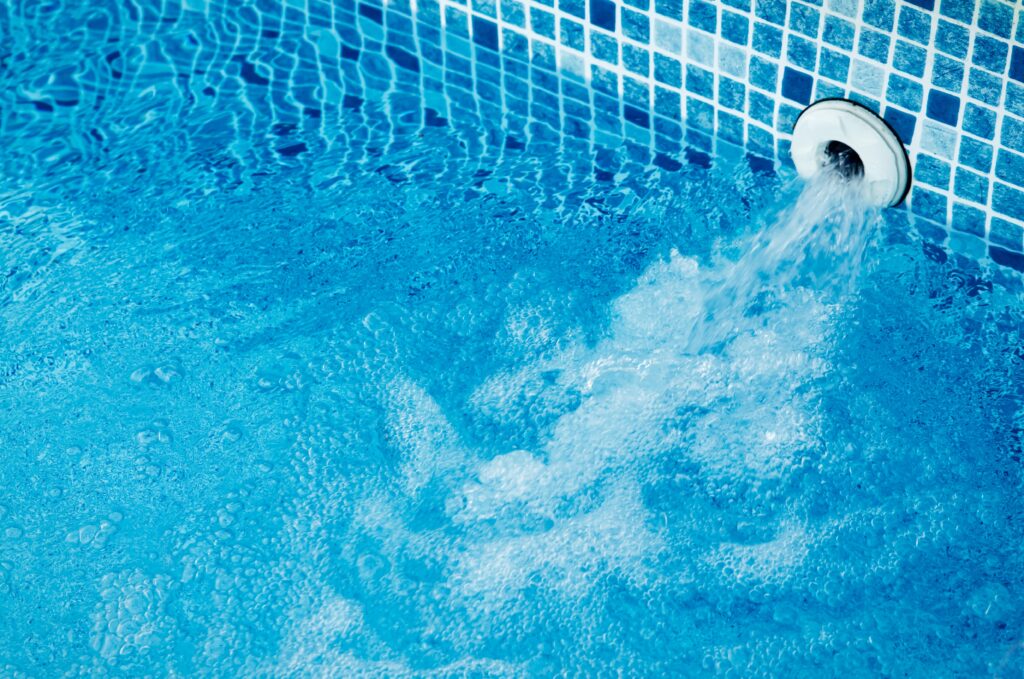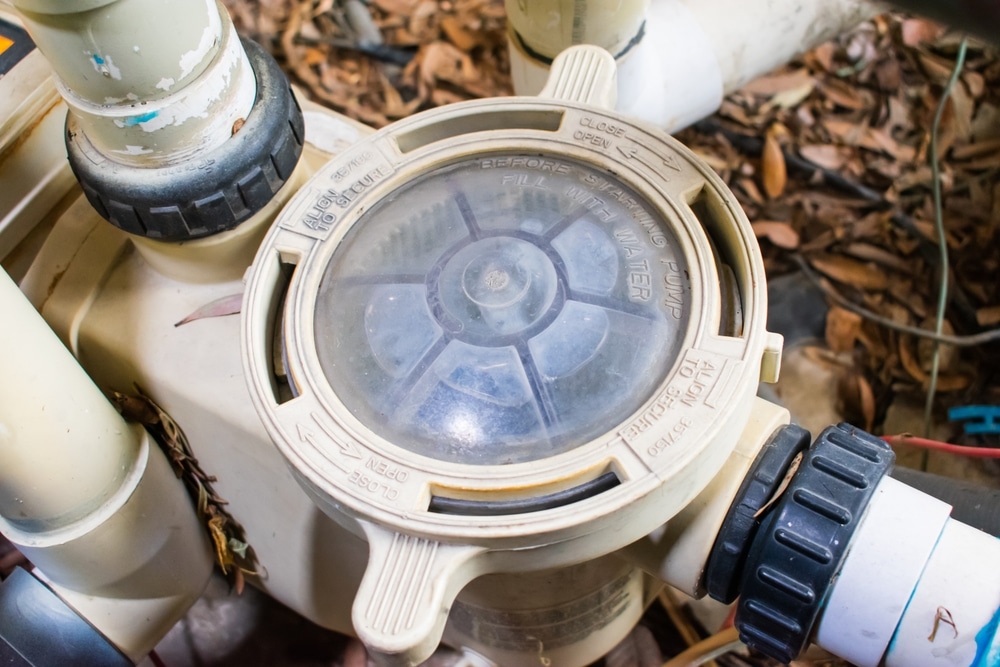Pool pumps typically make a quiet hum, which isn’t too noticeable when they are running. Well, that’s if the pump isn’t faulty anyway. Something is wrong if you hear your pool pump making a loud noise. Now, if your pool pump is screaming at you, then you definitely know something is wrong. But why is your pool pump making a loud noise and how do you fix it? Let’s find out.

This article may contain affiliate links, meaning I may get a small commission if you make a purchase through links on this site at no additional cost to you. Visit our affiliate disclosure page to learn more.
Why Is My Pool Pump So Loud?
There are several reasons why a pool pump makes a loud screaming noise Typically, it’s the motor bearings causing the very loud noise coming from your pool pump. Usually, the bearing noise will start off quiet, then become louder and louder over a few days and weeks. Many people describe the high-pitched sound as a screaming pump.
Other Reasons Your Pool Pump is Making a Loud Noise (Not the Motor Bearings)
When diagnosing the noise, knowing the different sounds a pool pump can make when it’s unhappy is handy. Here are some typical sounds a pump makes when it has a problem.
Pool Pump Making a Vibrating Sound
A vibrating or rattling sound usually means your pool pump is not correctly secured to its concrete pad. A correct pump installation should include placing the pump onto a rubber pad and securing it with concrete fixings and washers. So, the rattling sound is just the bottom of the pump vibrating on the concrete. A quick way to confirm this is to put some weight on the pump while it’s running, such as your foot. If this is the issue, then the noise will stop.
Pump Noise Starts & Stops
Water in your pool pump or lack of water can make a noise, making you think there is a mechanical fault with your motor. A quick way to check is to see if the pump is full of water all of the time. If the water fills then drains repeatedly, and the pump noise starts and stops, then you have a different issue. Problems such as low water levels, incorrect valve positions, or even a collapsed pool vac hose can prevent proper water flow through your pool equipment.
Grinding Sound From the Pool Pump
If your pool pump is making a grinding sound, then it’s likely that debris is caught inside the impeller and the impeller housing. For example, if a rock gets past the pump basket, it’s heading straight into the impeller. If the rock is big enough, it won’t pass the impeller; instead, it will begin to grind and make a loud noise. The only practical way to diagnose this is to remove the impeller and look for the debris.
Pool Pump Making Buzzing Sound
One of the sounds that you could mistake for a bad bearing is a bad motor capacitor. A bad capacitor can make a buzzing noise as loud as the screaming from a bad bearing. However, there is a distinctive difference between buzzing and screaming sounds. Also, a bad start capacitor will prevent your pool pump from starting, and a bad run capacitor will make your pump run at random speeds. With this in mind, you’ll easily be able to tell the difference between a bad bearing and a bad capacitor.
How to Test Pool Pump Bearings
First, test your pool pump motor to eliminate any other potential issues from pointing you in the wrong direction. So, remove the motor and try to spin the center bar. If the motor center bar is hard to turn, moves from side to side, or makes a noise when turned, then the bearings are bad.
Can Pool Motor Bearings Be Replaced?
Replacing pool motor bearings yourself is a cost-effective way to fix your pool pump motor. The process is pretty complicated, and you’ll need a few specialist tools. But it’s certainly a good option if you have the tools already in your toolbox and are handy with mechanics.

How Often Should Motor Bearings Be Replaced?
Different factors can determine how often motor bearings need to be replaced. For example, if your pump is in full sun and runs for long hours, the bearings work much harder, but this isn’t to say the bearings won’t last for years. It’s not as if bearings are part of regular servicing. So, it’s a complete guess to put a period on how long bearings should last, as some can last for months, and some can last for years. It’s all down to how well you look after them.
How Much Does it Cost to Replace Motor Bearing?
Replacement bearings should cost around $20 for two bearings, including a new shaft seal. So, if you are repairing it yourself, this is all it should cost. However, you’ll pay a lot more if you take your motor to a pool store for repair. I’ve seen pool stores charge more than $100 to repair the bearings. So this is where you’ll need to evaluate the cost of a repair compared to a new motor. For example, a 1.5 HP standard generic pool pump electric motor starts at about $150 plus tax. So, depending on what your local store wants to charge, a new motor may be the more cost-effective option in the long run.
Tools Needed to Replace Motor Bearings
You’ll need many different tools to replace pool pump motor bearings. Here is a list of all the tools I use for this repair. Also, I have added links giving you examples of each tool and what they look like. You’ll probably already have most of them in your toolbox, but if you are unfamiliar with a particular tool or don’t have one, you can use the link.
Tools & Parts to Replace Pool Pump Motor Bearings
- New Motor Bearing (Motor Specific)
- Shaft Seal Parts (Pump Specific)
- Socket Wrench Set
- Bearing Puller
- External Ring Pliers
- Short Metal Pipe
- Dead Blow Hammer
- Screwdriver Set
- Open Wrench Set
- Needle Nose Pliers
- Marker Pen
- Pool Seal Lube
Steps to Replace Pool Pump Bearings (My Complete Guide)
Replacing pool pump motor bearings is a pretty long and involved process. You’ll need to do many steps in a specific order. Therefore, I have broken my guide down into five separate stages.
Pool Pump Motor Bearing Repair Stages
- Pool Pump Motor Removal
- Pool Pump Motor Disassembly
- Pool Pump Motor Bearing Installation
- Pool Pump Motor Assembly
- Pool Pump Motor Installation
Because not every pool pump and motor are the same, I have used a Hayward Super Pump in this guide as an example. Even if you have a different brand, you can still use my guide as an outline for what is needed. So, let’s look at the process for replacing the bearings and stopping your pool pump from screaming.
Stage 1 – Pool Pump Motor Removal
- Turn off the power to the motor.
- Remove the electrical cover for the back of the motor.
- Remove the attached power supply wires.
- Remove the bolts securing the pump seal plate to the pump housing.
- Pull the motor and seal the plate from the pump.
- Remove the diffuser from the seal plate to expose the impeller.
- Secure the motor shaft so that it can’t turn.
- Unscrew the impeller.
- Remove the seal plate.
- Replace the shaft seal in the seal plate.
- Remove the motor mounting plate.
- Remove the water slinger rubber washer from the end of the motor shaft.
Stage 2 – Pool Pump Motor Disassembly
- Release the V-switch from the back of the motor.
- Release the capacitor from the back of the motor.
- Remove the motor governor from the end of the shaft at the back of the motor.
- Mark the alignment of the motor end frame and the motor shell with a pen.
- Remove the 4 through bolts from the motor.
- Remove the front end bell of the motor, separating the shell and the shaft assembly.
- Pull the shaft assembly from the motor shell.
- Remove the bearing load spring from the rear of the shaft.
- Remove the front-end bell bolt.
- Remove the front-end bell from the motor shaft.
- Set up the bearing puller on the rear bearing.
- Tighten the bearing puller to remove the rear bearing.
- Remove the snap ring from the front of the front bearing.
- Set up the bearing puller on the front bearing.
- Tighten the bearing puller to remove the front bearing.
Stage 3 – Pool Pump Motor Bearing Installation
- Confirm the new bearings match the old bearings before installation.
- Stand the motor shaft and rotor vertically on a hard work surface.
- Place one of the new bearings onto the top of the motor shafts.
- Align the new bearing with the shaft.
- Place a hollow metal pipe over the top of the new bearing
- Using a hammer, gently strike the metal pipe to drive the bearing down the shaft.
- Repeat until the new bearing is fully seated in position.
- Reinstall the snap ring to secure the new bearing.
- Turn the shaft around.
- Install the bottom bearing using the same process.
Stage 4 – Pool Pump Motor Assembly
- Loosely attach the bearing, locking clip to the front-end bell.
- Push the motor shaft into the front-end bell.
- Make sure the bearing fully pushes into the bearing well of the front-end bell.
- Tighten the bearing locking clip to secure the bearing.
- Insert the rear bearing load spring into the rear bearing well.
- Insert the motor shaft and rotor in the motor shell.
- Ensure the rear bearing is fully seated in the rear bearing well.
- Align your pen markings on the shell and bell to ensure the correct configuration.
- Install the 4 through bolts and tighten.
- Install the motor governor.
- Reattach the V-switch.
- Reattach the capacitor.
- Reinstall the water slinger washer to the front of the motor.
- Reattach the electrical wires.
Stage 5 – Pool Pump Motor Installation
- Position the motor mounting plate onto the motor.
- Align the “TOP” marking of the mounting plate to the top of the motor.
- Attach the motor mounting plate to the front of the motor.
- Position the seal plate onto the mounting plate.
- Align the “TOP” marking of the seal plate to the top of the motor mounting plate.
- Reattach the seal plate to the motor mounting plate.
- Secure the back end of the motor shaft to prevent rotation.
- Screw the impeller onto the front of the shaft.
- Reattach the rear motor cover.
- Reattach the diffuser lining up the “TOP” marking.
- Slip the motor into the pump housing.
- Secure the seal plate to the pump housing.
Check the Pump O-Rings & Seals
While replacing motor bearings, double-check the condition of all seals and o-rings. If any seals and o-rings are damaged or worn, install replacements to prevent the pump and motor from leaking. Also, use plenty of pool seal lube to ensure the o-ring and seals seal correctly.

